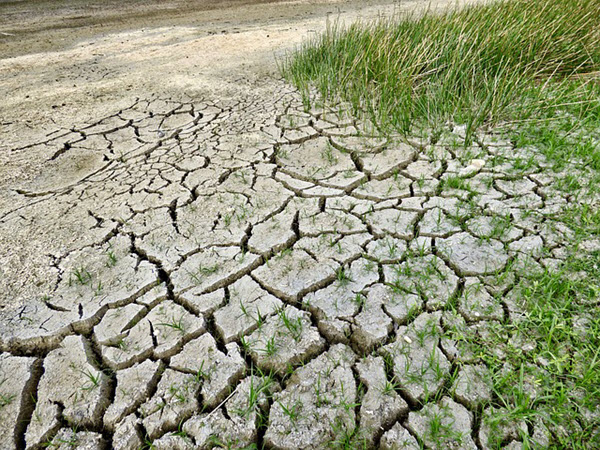Can Humans Reverse Climate Change With Dietary Changes?
By Brian Wallace
November 26, 2018 • Fact checked by Dumb Little Man

From urban American food deserts to developing countries, global hunger hits over 820 million people. Additionally, another two billion face nutrient deficiencies.
After years of decline in world hunger, it seemed that some real headway was being made to combat the suffering and starvation experienced by millions of people. Unfortunately, the global statistics of those facing chronic hunger has steadily risen in the last two years.
Climate shocks and natural disasters contribute to emergency level food insecurity for almost 95 million people. The list includes droughts, heat waves, hurricanes, and floods.
If continued at the current rate, by 2050, the effects of unchecked climate change could lead to 4.8 million additional undernourished children on top of the current one in six already facing hunger.
Food Insecurity Is On The Rise Again
In 2017 alone, 29 million people needed humanitarian aid. Again in 2017, 3.9 million of those needing humanitarian aid required urgent and life-saving assistance. Almost 29 million people face both crisis-level food insecurity on top of a risk of regular climate shocks.
It has been shown that chronic undernourishment among infants before reaching age two can lead to irreversible developmental damage. This includes lifelong health complication, stunted growth, and delayed physical and mental development. Though children are most at risk, other vulnerable populations lack the resources to adapt to unsustainable practices.
Individuals living in poverty are unable to meet their nutritional requirements. That commonly happens when food prices soar and the nutritional value of the food itself is diminished. Agricultural workers and farmers themselves, whose very livelihood is dependent on workable farmland, are at risk for falling into poverty when crop yields fall short and climate shocks impact their valuable land.
Furthered food insecurity from higher prices and lowered availability discourage healthy eating habits as more people are forced to choose high-calorie/low-nutrient foods.
How Environmental Disasters Impact Nutrition

We have seen the effects of environmental disasters in our food systems in the past. In the 1930s, one of the worst ecological disasters hit the US. A lot of people remember it as the Dust Bowl.
High winds and deadly dust storms devastated the American Great Plains, destroying homes and encouraging mass abandonment of the region. The causes of the Dust Bowl are a combination of irresponsible federal policies that encouraged over-farming, new plowing technologies, and the use of heavy machinery that lead to massive soil erosion.
Modern farming policies may also be headed in the wrong direction. US federal crop insurance encourages farmers to maintain planting on already deeply degraded farmland by offering payouts when inevitable below-average crop yields result.
Common farming practices expose carbon in the soil through:
- Overuse of chemical pesticides and herbicides
- Excessive and harsh tilling
- Heavy machinery burning fossil fuels and placing pressure on already depleted soil
Understanding just how climate change and pollution affects our farmlands is the first step to changing unsustainable practices and reversing the painful effects.
Today, our food system is a major contributor to greenhouse gas emissions. It causes anywhere between 19%-29% of emissions from food production and consumption. Overuse of farmland becomes a dangerous cycle. As greenhouse gasses in the atmosphere increase, it leads to less productive fields and lowered nutritional value of staple crop yields:
- Higher temperatures slow crop growth and development
- Extreme weather events destroy crops and the land
- High CO2 environments reduce the levels of iron, zinc, and protein in food crops
See Also: On Confronting Climate Change
Getting Ourselves Back On Track
While current global farming practices push us further towards potential disaster, there are changes we can make to work against these effects. Even on small-scale personal levels, simple changes can encourage big changes.
By 2050, dietary variation could reduce the environmental footprint of individuals by helping limit the greenhouse gas emissions per person. For the average adult, cutting back on processed foods and reducing consumption of animal products could show a 17% reduction in personal greenhouse gas emission footprints. As a whole, it brings these emissions down by 40%.
Conclusion
As the effects of climate change rip through the landscape, the damage to the delicate ecosystems of our planet begins to show. Though the melting glaciers may seem far off, it’s the devastating weather events that end up too close to home.
Taking responsibility for climate change is more important than ever, now that it’s beginning to impact our access to food, nutrition levels, and world hunger. For more detail, this infographic guides us through the relationships among our nutritional needs, climate change, and farming standards.

Source: Supplement Timing
Brian Wallace
Brian Wallace is the Founder and President of NowSourcing, an industry leading infographic design agency based in Louisville, KY and Cincinnati, OH which works with companies that range from startups to Fortune 500s. Brian also runs #LinkedInLocal events nationwide, and hosts the Next Action Podcast. Brian has been named a Google Small Business Advisor for 2016-present and joined the SXSW Advisory Board in 2019.







